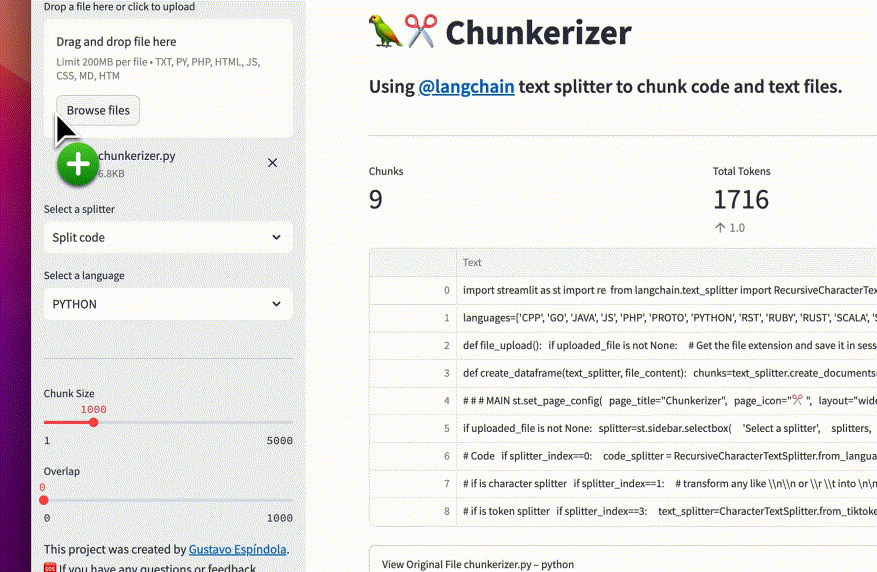Welcome to the captivating realm of natural language processing! In this article, we embark on an exciting journey exploring the indispensable tools for transforming documents and splitting texts. All of this has been made possible by the groundbreaking emergence of “Retrieval Augmented Generation” (RAG) , a revolutionary approach that is reshaping the landscape of language model training. Get ready to be amazed!
Why is effective information division crucial? Because it allows language models to access external data after initial training. That’s where Langchain’s Document Transformers and Text Splitters come into play, offering powerful applications and customization options.
Tune in for a live demonstration on streamlit✨

The Marvel of Text Splitters
So, what are Text Splitters? They are intelligent tools that divide text into smaller fragments with semantic meaning, which usually correspond to sentences. But it’s not just about splitting; it’s about strategically combining these fragments for optimal results.
Here’s how Text Splitters work:
- Divide the text into small fragments with semantic meaning, such as sentences.
- Combine these small fragments into a larger fragment until a certain size is reached, often measured by a specific function.
- Once the desired size is reached, the fragment becomes its own unit of text, while maintaining contextual overlap with the previous and next fragments.
What makes Text Splitters highly customizable? You have control over two essential aspects:
- How the text is divided: You can define division rules based on characters, words, or tokens.
- How the fragment size is measured: Adjust the fragment size according to your specific needs.
Unveiling the Text Splitters in LangChain
In the realm of LangChain, you’ll find various types of Text Splitters to suit your requirements:
RecursiveCharacterTextSplitter:- Divides the text based on characters, starting with the first character. If the resulting fragments are too large, it moves on to the next character. Enjoy the flexibility of defining division characters and fragment size.
- Similar to RecursiveCharacterTextSplitter, but with the ability to specify a custom separator for more specific division. By default, it tries splitting on characters like “\n\n”, “\n”, and space.
- Unlike the previous types, RecursiveTextSplitter divides text based on words or tokens instead of characters. This approach offers a more semantic view, making it ideal for content analysis.
- Leverage the might of OpenAI’s language model to dissect text based on tokens. This enables astoundingly precise and contextual segmentation, making it an indispensable tool for advanced natural language processing applications.
Explore further with this resources
Wan’t to try this on your own? Below, you’ll find the demo and code to experiment with in your own projects.
View the DemoEmbark on your text-splitting adventure with LangChain and unlock a world of possibilities!
Leave a Comment